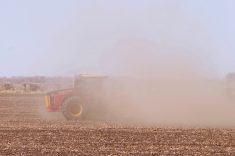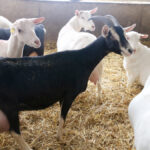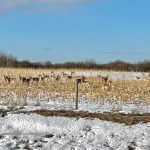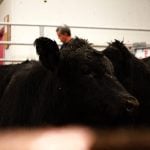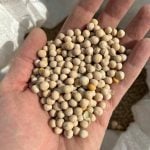As we head into the 2025 grain production year, farmers should be looking at the economics and making adjustments to keep themselves financially viable. Last year at this time, we presented our outlook for 2024 and in this article we will present an update for 2025.
In January, Farm Credit Canada (FCC) issued an economic outlook for the agriculture industry. Des Sobool, FCC’s grains and oilseeds economist, stated market prices should be the main focus of farmers this year — in other words, trying to get the best possible prices for these commodities in another year of low returns. At that time, Des forecasted a glut of corn and soy on the international market would drive down prices, and reduced demand would exacerbate prices further. Fortunately, our low Canadian dollar will help support grain growers somewhat. What effect the present trade wars will have is anyone’s guess, so we’ll leave that variable alone.
So, let’s have a look at those prices and see what impact they might have on producers’ bottom lines.
Read Also

Gentle treatments for pain in the neck
Heading toward year-end, people unknowingly tense up against the cold and busyness, causing neck pain that can often be treated with appropriate support and gentle mobility, athletic therapist Kathlyn Hossack says.
First, some history. Here we see two updated graphs from Alberta Agriculture and Irrigation’s statistics section, showing prices for wheat and canola over the last four years up to Jan. 1, 2025.


As you can see in those graphs, the trend has been down since the highs of 2022 and at the time of this writing (March 15, 2025), wheat is in the $9/bu. ($330/tonne) range and canola is in the $13.50/bu. ($600/tonne) range. Those are the forward prices that are available at this time and the values we will use in this analysis.
Also, we’ll assume that input costs will be a little higher in 2025 ($400 per acre) versus 2024 ($380 per acre). We’ll use six per cent interest for this year.
To illustrate the situation for 2025, we have attached a scenario for a hypothetical 5,000-acre farm (see the tables). We have kept the expected 2025 gross income at $500 per acre, the same as in our 2024 article. The only other changes were the interest rates on the loans. Variable costs are also assumed to be the same as 2024, at $60 per acre.



For 2025, the interest rates used are six per cent on the current debt, intermediate and long-term debts. For 2024, the interest rates used were seven per cent for all the debt. The bottom line shows 2024 had a $483,000 deficit and 2025 could be even worse, with a projected $547,500 deficit.
Here are some qualifying factors and steps you could consider to alleviate a possible financial dilemma.
Sharpen your pencil
Calculate your own costs and returns for 2025. Hopefully you can do better than our projections. One way to project costs is to look at the history for each line item for the past three to five years and use that as a base to do your 2025 projection. Try to reduce your own expenses as much as possible and watch for market price rallies. When rallies occur, lock a portion of your crop in at the higher prices.
It’s unlikely that you will be at the maximum of $500,000 for your operating loan for the whole year. Also, all your loans will probably not be at six per cent. Hopefully you will have some from lower-interest years in the four to five per cent range.
Cash advances
Last year the federal government announced the interest-free portion of the cash advance program was up to $250,000, which may be available if you qualify under certain conditions. Also, farmers were eligible for cash advances for another $750,000 (on top of the $250,000 interest-free portion) at preferred rates, which will likely be considerably less than our projected six per cent.
Input loans
Some crop inputs suppliers are offering loans for crop inputs at preferential rates until February 2026. This may reduce your current interest charges.
Negotiate
Depending on your financial situation and credit rating, you may be able to negotiate better interest rates than those posted by the lenders. Usually, their first offer is not their best offer.
All this information is intended for you to be very cautious about your expenditures for this year. Try to save on expenses wherever you can. Be extra-careful about new capital expenditures such as machinery, buildings, land and major equipment. We regularly see situations where people have made capital expenditures they couldn’t pay for (or make the payments) and they wind up in the Farm Debt Mediation Program. So, please do cash flow projections for your operation this year to see if you will be able to make your payments on time.
If you foresee problems, talk to your creditors before the problems become serious. If you have to replace equipment this year, consider alternatives such as sharing with a neighbour, buying used, or arranging short-term rentals.
To do cash flow projections we use a farm financial spreadsheet called the Agricultural Business Analyzer (ABA), which does all the calculations mentioned above and many more. It is a really good tool to analyze your present situation and do forward projections for new purchases before you buy them. ABA is a free download from the Farm Management Canada website.
If you would like some help with doing financial projections, please contact either of us.








